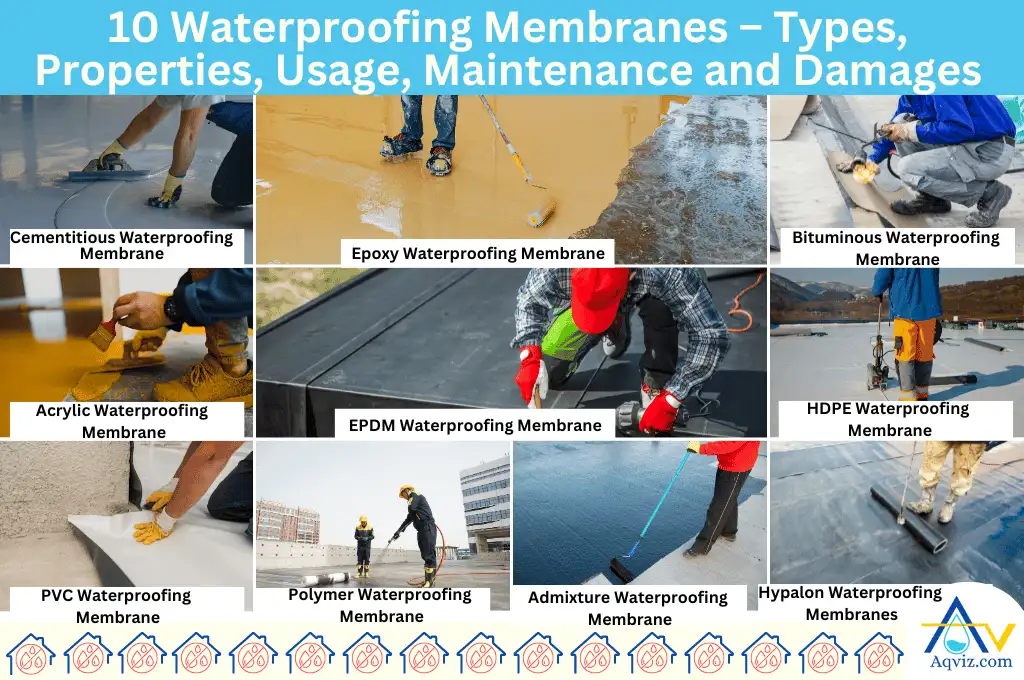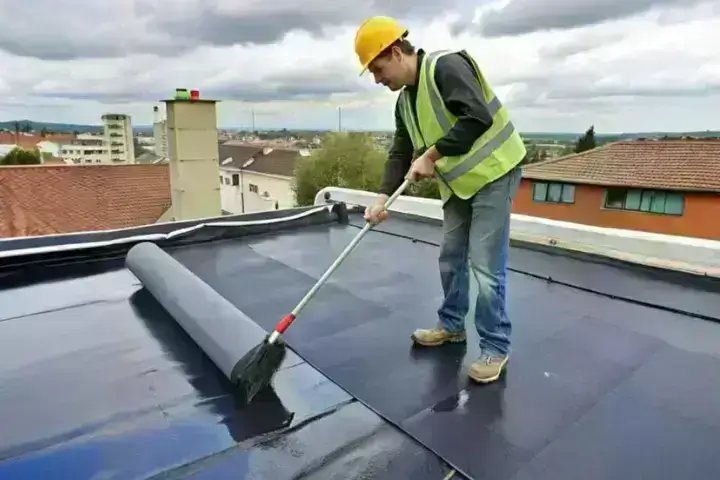Water Solutions That Get Results: Omaha’s Most Effective Systems
Water Solutions That Get Results: Omaha’s Most Effective Systems
Blog Article
How Waterproofing Works: A Detailed Look at Techniques and Technologies
Waterproofing is necessary for safeguarding structures from moisture-related damages. It involves various strategies and innovations that produce barriers versus water intrusion. Standard methods, such as compacted clay, exist together with modern-day innovations like liquid-applied membrane layers. Recognizing the subtleties of these techniques is essential for efficient application. The efficiency of any type of waterproofing option hinges not just on the methods utilized but likewise on recurring upkeep and examination. What are the crucial elements that affect lasting efficiency?
Comprehending the Basics of Waterproofing
Waterproofing is a vital procedure that secures structures from water breach, which can lead to considerable damages gradually. This approach includes the application of numerous products and methods developed to develop an obstacle against moisture. The key goal is to avoid water from passing through surface areas, which can create damage, mold growth, and architectural instability.Various aspects affect the selection of waterproofing method, consisting of the type of structure, its area, and ecological conditions. Understanding the physics of water movement and the residential or commercial properties of various materials is important in choosing an effective waterproofing solution.Effective waterproofing not just safeguards structures however additionally improves their durability and integrity. Typically, it is incorporated into the design stage of building and construction to ensure extensive security. As understanding of water-related concerns expands, the relevance of comprehending waterproofing principles comes to be progressively clear to engineers, builders, and homeowner alike.
Typical Waterproofing Techniques
Typical waterproofing approaches have actually been used for centuries, relying upon tried and true strategies and products to secure structures from water damage. One of the earliest methods entails making use of clay, which, when compacted, develops a natural barrier versus moisture. In addition, bitumen, a sticky, black product stemmed from petroleum, has been used for its water-resistant residential or commercial properties, commonly related to roofing systems and foundations.Another technique involves the application of lime-based plasters, which offer a breathable layer that allows dampness to escape while stopping water access. Thatch roof covering, a typical approach still seen in some cultures, uses exceptional waterproofing due to its securely loaded straw layers.Moreover, using stone and block has actually been noticeable, as these materials are naturally resistant to water when effectively mounted. On the whole, typical waterproofing techniques highlight the relevance of picking ideal materials and building practices to improve longevity against water invasion.
Modern Waterproofing Technologies
Improvements in modern-day waterproofing innovations have revolutionized the method structures are safeguarded from water damages. Innovative techniques such as liquid-applied membranes and advanced sealers have improved the effectiveness and versatility of waterproofing services. These innovations enable seamless application, lowering the threat of leakages and guaranteeing complete coverage over complex surfaces.Moreover, the combination of smart modern technologies, such as moisture sensors and automated surveillance systems, enables real-time analysis of waterproofing efficiency. This proactive strategy assists in timely upkeep and reduces long-term repair costs.Additionally, innovations in spray-applied finishes use fast application and exceptional attachment, adjusting to different substratums while giving robust security. Methods like polymer-modified systems better improve adaptability and resilience, making them ideal for varied atmospheres. On the whole, contemporary waterproofing modern technologies not just minimize water intrusion but additionally contribute to the long life and sustainability of structures, noting a considerable change in the market.
Materials Utilized in Waterproofing
The performance of waterproofing options heavily relies upon the materials utilized in their application. Various products are employed to produce obstacles against water access, each with special residential properties matched for various atmospheres. Typically used materials include membrane layers, coatings, and sealants.Liquid-applied membrane layers, typically made from polyurethane or acrylic, create a smooth barrier that adjusts to intricate surface areas. Sheet membrane layers, commonly constructed from rubber or thermoplastic, deal longevity and are ideal for bigger areas. Furthermore, cementitious waterproofing products, composed of cementitious substances, supply superb attachment and flexibility.Sealants made from silicone or polyurethane are vital for joints and seams, making sure comprehensive defense. In addition, advanced products, such as geo-composite membranes, integrate several features, enhancing performance. On the whole, the choice of waterproofing products is vital in achieving durable and efficient water resistance, tailored to specific job requirements and ecological problems.
Common Applications of Waterproofing
Waterproofing plays a vital role in different fields, making certain the durability and integrity of frameworks. Typical applications consist of domestic solutions that secure homes, industrial framework that safeguards businesses, and industrial setups that need durable defense against wetness. Recognizing these applications highlights the relevance of waterproofing in preserving both safety and security and functionality across various atmospheres.
Residential Waterproofing Solutions
Several house owners face difficulties with wetness intrusion, Our site making effective domestic waterproofing remedies essential. Numerous techniques exist to resolve this problem, consisting of inside and exterior waterproofing article source systems. Interior remedies often involve the application of sealants and finishings to basement wall surfaces, which aid prevent water seepage. Exterior approaches normally include the setup of drain systems and water-proof membrane layers that divert water away from the foundation.Additionally, homeowners might think about sump pumps to get rid of water build-up and dehumidifiers to manage moisture degrees. Correct grading and making use of rain gutters likewise play a vital function in managing water circulation around the home. By applying these techniques, house owners can greatly reduce the threat of water damages and mold and mildew development, guaranteeing a dry and risk-free living setting.

Commercial Framework Defense
Reliable waterproofing remedies play a vital role in the security of commercial infrastructure. Landscape drainage Omaha. These strategies are necessary for guarding structures, car park structures, and bridges from water damage, which can compromise structural integrity and lead to pricey fixings. Common applications include the installment of membranes, coatings, and sealers that develop obstacles against moisture seepage. Locations such as cellars, roofing systems, and outside walls are typically focused on to ensure long life and sturdiness. Additionally, waterproofing systems can boost power efficiency by preventing water-related issues that might lead to mold and mildew development and damage. By carrying out durable waterproofing steps, building owners can safeguard their financial investments and keep functional performance, ultimately adding to the total sustainability of commercial facilities
Industrial Applications Introduction
While various markets deal with one-of-a-kind difficulties, the requirement for reputable waterproofing services continues to be a consistent in industrial applications. Industries such as production, construction, and power usually run into atmospheres where moisture direct exposure can endanger structural honesty and operational efficiency. In manufacturing facilities, waterproofing is critical for safeguarding equipment and products from water damage. In building, it safeguards foundations and cellars versus groundwater seepage. The energy field depends on waterproofing for the protection of equipment in hydroelectric plants and offshore structures. In addition, food processing sectors utilize waterproofing to ensure health and conformity with safety requirements. In general, effective waterproofing services are important for boosting resilience, security, and efficiency across different commercial setups.
Upkeep and Long Life of Waterproofing Solutions
Waterproofing services are developed to offer lasting security versus wetness breach, regular maintenance is important to guarantee their performance and durability. Routine examinations play a considerable duty in determining possible concerns such as splits, peeling off, or indicators of water damage. Addressing these issues quickly can stop further damage and expensive repairs.Additionally, cleansing the surface area of waterproof locations assists get rid of dust and particles that could endanger the stability of the waterproofing barrier. It's additionally advisable to reapply protective finishings or sealants as suggested by manufacturers to keep perfect efficiency. Ecological factors, such as UV direct exposure and extreme weather problems, can influence the aquadefense lifespan of waterproofing products, making normal analysis crucial
Often Asked Concerns
Can Waterproofing Be Applied in Cold Weather?
The inquiry of using waterproofing in cold weather raises issues about adhesion and curing. Several products might not carry out at their ideal in reduced temperature levels, demanding careful selection and consideration of certain standards for efficient application.
How Much Time Does Waterproofing Typically Last?
The duration of waterproofing effectiveness differs based upon materials and environmental factors. Usually, it can last from five to 10 years, but regular maintenance and inspections are vital to ensure peak efficiency and long life.
Is Do It Yourself Waterproofing Effective and Safe?
The performance and safety of DIY waterproofing rely on various factors, consisting of worldly quality and application technique. While some people achieve satisfactory results, others might encounter concerns that endanger long-term defense and structural honesty.
What Are the Signs of Failing Waterproofing?
Indications of stopping working waterproofing consist of visible water stains, peeling paint, mold and mildew development, moldy smells, and dampness in walls or ceilings - Sump pump installation & replacement Omaha. These indicators recommend endangered barriers, necessitating punctual examination and prospective remediation to prevent further damages
How Do I Select the Right Waterproofing Specialist?

Report this page